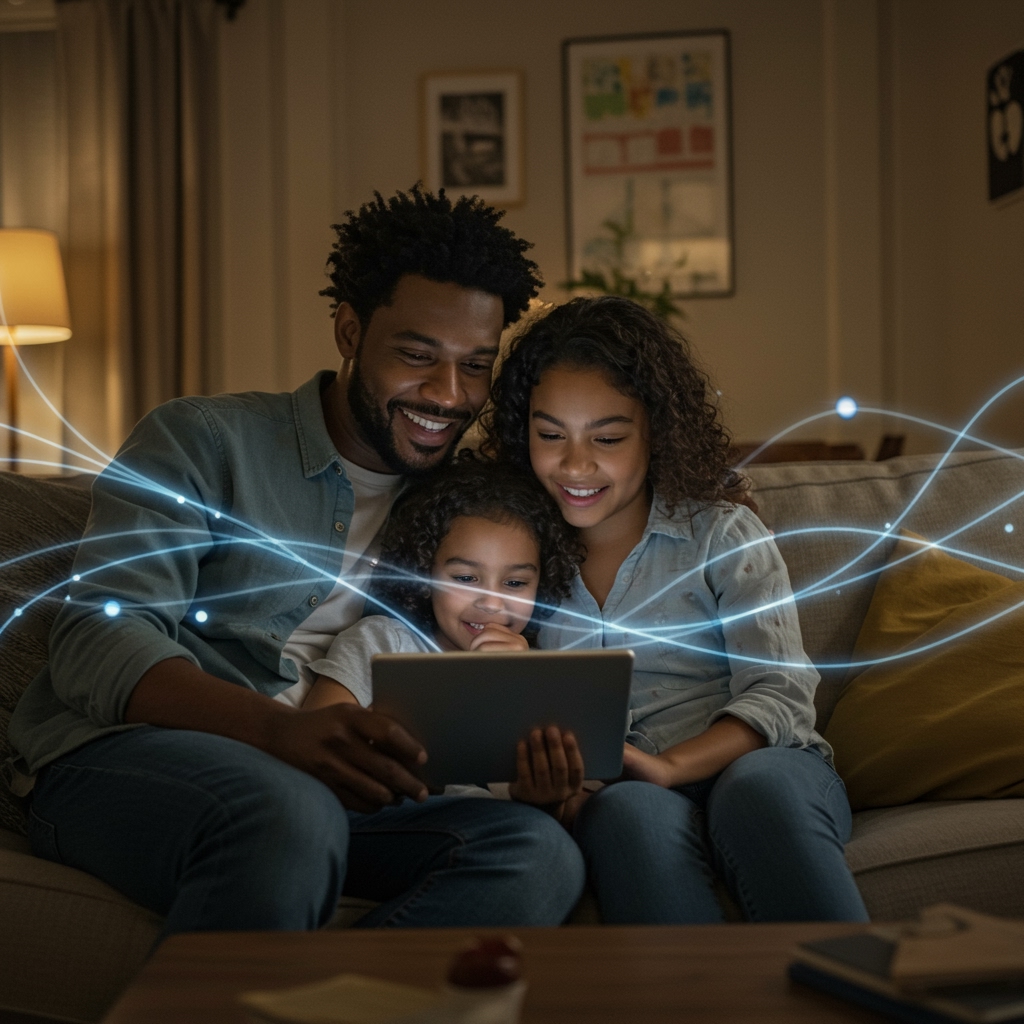In today’s connected world, access to reliable phone and internet service isn’t just a convenience – it’s often a necessity for finding jobs, accessing healthcare, helping children with schoolwork, and staying in touch with family. However, for many low-income individuals and families, the cost of these essential services can be a significant barrier. This is where the Lifeline program comes in. As a vital lifeline government program, it aims to ensure that everyone, regardless of income, has access to basic communication services, playing a crucial role in bridging the digital divide.
What is the Lifeline Program?
So, what is Lifeline exactly? At its core, the Lifeline program is a federal initiative designed to make communication services more affordable for eligible low-income consumers. It provides a monthly Lifeline program discount on qualifying telephone or broadband internet service.
The program is overseen by the Federal Communications Commission (FCC) and administered by the Universal Service Administrative Company (USAC). It is funded by the Universal Service Fund (USF), which collects contributions from telecommunications providers.
Purpose and Goals of Lifeline
The primary purpose of the Lifeline government program is to ensure that low-income individuals and families can afford essential communication services. By providing a monthly discount, Lifeline helps connect people to vital resources and opportunities. This includes:
- Accessing job opportunities and participating in remote work.
- Scheduling and attending healthcare appointments, including telehealth services.
- Enabling children to complete online homework and access educational resources.
- Staying connected with family and friends, especially important for seniors and those with disabilities.
- Accessing emergency services and community support.
Ultimately, Lifeline promotes social and economic opportunity by ensuring that the cost of basic phone or internet service doesn’t prevent someone from participating fully in modern life. It is a key component of the broader effort to bridge the digital divide, providing access to both voice and internet services for those who need it most.
Who is Eligible for the Lifeline Program?
Eligibility for the Lifeline program is based on either your household income or your participation in certain government assistance programs. It’s important to understand the specific Lifeline program eligibility requirements.
Income-Based Eligibility
Your household may be eligible if its total income is at or below 135% of the Federal Poverty Guidelines. These guidelines are updated annually and vary based on the number of people in your household and your state of residence. You will typically need to provide documentation to prove your income, such as tax returns, pay stubs, or Social Security statements.
Program-Based Eligibility
You are automatically eligible for Lifeline if you or someone in your household participates in one of the following federal assistance programs:
- Medicaid
- Supplemental Nutrition Assistance Program (SNAP), also known as Food Stamps
- Supplemental Security Income (SSI)
- Federal Public Housing Assistance (FPHA)
- Veterans Pension and Survivors Benefit
Additionally, residents on Tribal lands may qualify based on participation in the programs listed above or one of the following Tribal-specific programs:
- Bureau of Indian Affairs General Assistance
- Tribally Administered Temporary Assistance for Needy Families (TANF)
- Head Start (only those meeting the income qualifying standard)
- The Food Distribution Program on Indian Reservations (FDPIR)
Household Definition
For Lifeline purposes, a “household” is defined as a group of people who live together and share income and expenses. A critical rule is that only one Lifeline discount is allowed per household, regardless of how many eligible individuals live there.
Proof of Eligibility
When you apply, you will need to provide documentation to demonstrate your eligibility, whether based on income or program participation. This could include copies of benefit award letters, tax returns, or other official documents.
What Benefits Does Lifeline Provide?
The primary Lifeline program benefits include a monthly discount on the cost of phone or internet service. This is a direct reduction in your monthly bill from a participating provider.
The standard monthly discount is currently up to $9.25. For consumers living on Tribal lands, the discount is enhanced, providing up to $34.25 per month.
This discount can be applied to:
- Lifeline program phone service: This can be either wireline (landline) or wireless (mobile) phone service.
- Lifeline program internet service: This includes broadband internet access.
- Bundled voice and broadband service: If a provider offers a package that includes both services, the discount can often be applied to the bundle.
It’s important to note that the Lifeline program provides a discount on the *service itself*, not typically a free phone or computer. However, some participating providers may offer free or heavily discounted devices as part of their specific Lifeline service plans to make getting connected even easier. The core benefit is the monthly reduction in the cost of your essential communication service.
How Does the Lifeline Program Work?
Understanding how to apply for the Lifeline program and how it operates is crucial for potential participants.
Application Process
There are two main ways to apply for the Lifeline program:
- Through the National Verifier: You can apply online through the USAC National Verifier website or by mail using a printable application form. The National Verifier is a centralized system that checks your eligibility based on the information and documentation you provide.
- Through a Participating Lifeline Service Provider: Many phone and internet companies that offer Lifeline service can help you apply directly through their system. They will often use the National Verifier to confirm your eligibility.
Once your application is submitted, your eligibility will be verified. If approved, you can then sign up for a Lifeline-supported service plan with a participating provider.
Finding Participating Providers
Not all phone and internet companies offer Lifeline service. You need to find an Eligible Telecommunications Carrier (ETC) or broadband provider that participates in the program. USAC provides a searchable database on its website where you can find providers offering Lifeline program phone service or Lifeline program internet service in your area.
Choosing a Plan
Participating providers offer various plans that qualify for the Lifeline program discount. These plans must meet certain minimum service standards set by the FCC. You can compare plans based on factors like monthly cost (after the discount), included minutes, text messages, and data allowances to find one that best suits your needs.
Annual Recertification
To continue receiving the Lifeline discount, you must confirm your eligibility every year through an annual recertification process. USAC or your provider will notify you when it’s time to recertify. Failure to complete the recertification by the deadline will result in the loss of your Lifeline benefit.
One Per Household Rule
Remember, the “one per household” rule is strictly enforced. If someone else in your household is already receiving a Lifeline discount, you cannot receive a second one. You will need to certify that no one else in your household is currently receiving the benefit when you apply.
Lifeline vs. Affordable Connectivity Program (ACP)
Many people have heard of both the Lifeline program and the Affordable Connectivity Program (ACP). While both programs aimed to make communication services more affordable, they are distinct.
The ACP was a separate, temporary program established during the COVID-19 pandemic to provide a more significant discount on broadband internet service (up to $30/month, or $75/month on Tribal lands) and a one-time discount on a connected device. Households could potentially qualify for both Lifeline and ACP simultaneously, receiving both discounts.
However, the ACP was a temporary program, and its funding has been depleted. As of early 2024, the ACP stopped accepting new applications, and the program is expected to end soon, if it hasn’t already, once the remaining funds run out. It’s crucial to understand that the Lifeline program is a distinct, ongoing program with its own eligibility criteria and benefits, separate from the temporary ACP.
Common Questions About Lifeline
Here are answers to some frequently asked questions about the Lifeline program:
- Can I get a “free government phone” through Lifeline? The Lifeline program provides a monthly discount on phone *service*. While some participating providers may offer a free or very low-cost phone or device as part of their Lifeline plan package, the core benefit is the service discount, not a free device itself.
- How long does the application process take? Processing times can vary, but if you apply online through the National Verifier and your eligibility can be instantly verified through databases, approval can be quick. If manual review or documentation is needed, it may take longer, typically a few days to a couple of weeks.
- What documents do I need to apply? You’ll need proof of identity (like a driver’s license or passport) and proof of eligibility (like a benefit award letter, tax return, or pay stubs).
- How do I recertify my eligibility? USAC or your provider will contact you when it’s time to recertify. You can usually do this online, by mail, or sometimes by phone, confirming that you still meet the eligibility requirements.
- What happens if my income changes? If your household income increases above 135% of the Federal Poverty Guidelines, or if you stop participating in a qualifying government program, you are no longer eligible for Lifeline and must notify your provider.
- Can I switch Lifeline providers? Yes, you can switch to a different participating Lifeline provider at any time.
- Is Lifeline available in every state? Yes, the federal Lifeline program is available in all states, territories, and the District of Columbia.
Conclusion
The Lifeline program is a vital resource for low-income Americans, providing essential access to phone and internet services. By offering a monthly Lifeline program discount, this lifeline government program helps ensure that more people can connect with jobs, education, healthcare, and loved ones.
If you believe you meet the Lifeline program eligibility requirements, we encourage you to explore the program further. Access to communication is more important than ever, and Lifeline is designed to help bridge the gap for those who need it most.
For more information and to apply, visit the official Lifeline program website administered by USAC.


